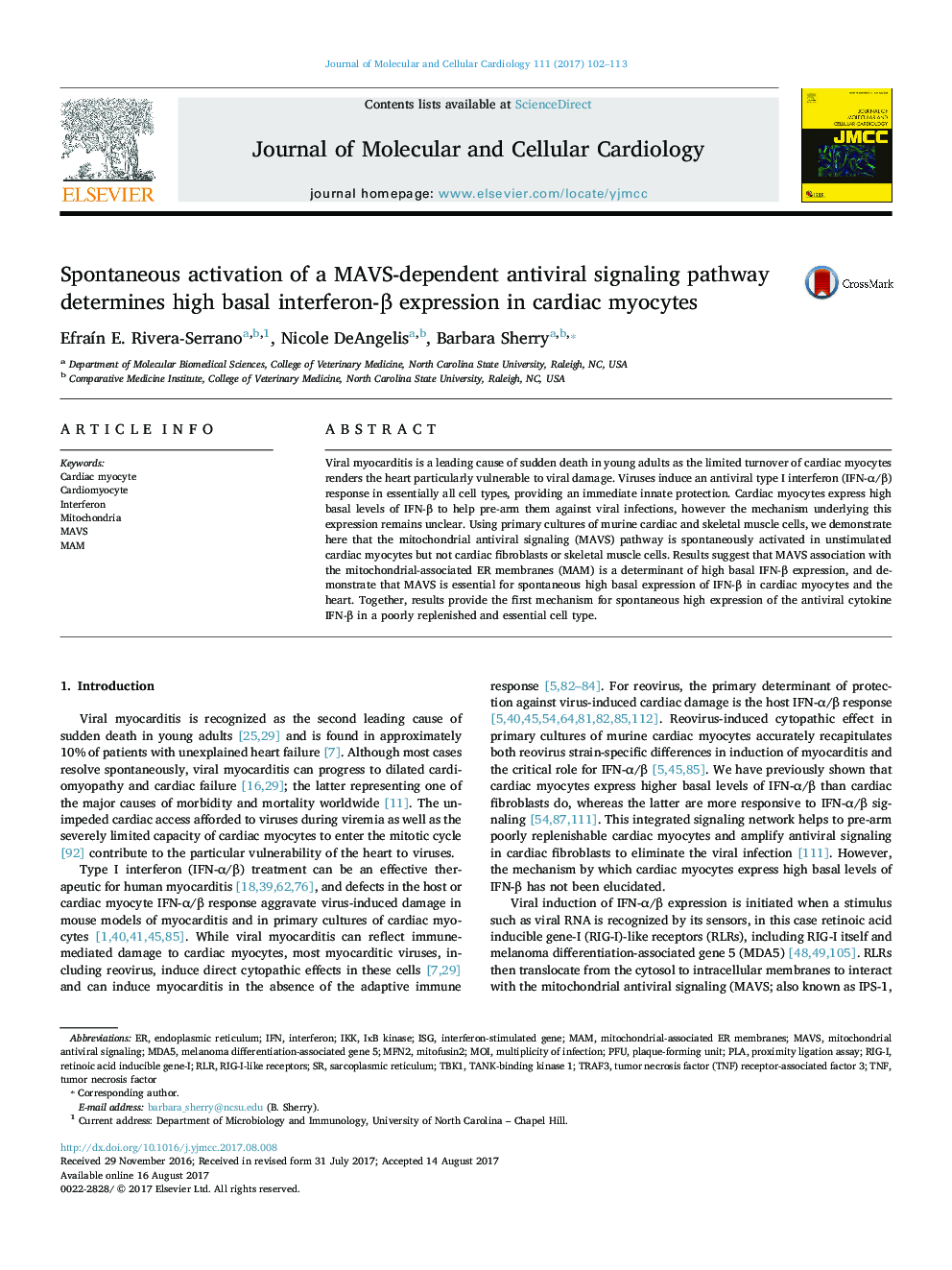| Article ID | Journal | Published Year | Pages | File Type |
|---|---|---|---|---|
| 5533632 | Journal of Molecular and Cellular Cardiology | 2017 | 12 Pages |
â¢Cardiac myocytes spontaneously express high interferon-β, an antiviral cytokine.â¢Cardiac fibroblasts and skeletal muscle cells do not express high interferon-β.â¢This reflects basal activation of an underlying mitochondria-associated pathway.â¢It is initiated by mitochondrial MAVS association with endoplasmic reticulum MAM.â¢Thus cardiac myocytes display a unique mitochondria-associated protective mechanism.
Viral myocarditis is a leading cause of sudden death in young adults as the limited turnover of cardiac myocytes renders the heart particularly vulnerable to viral damage. Viruses induce an antiviral type I interferon (IFN-α/β) response in essentially all cell types, providing an immediate innate protection. Cardiac myocytes express high basal levels of IFN-β to help pre-arm them against viral infections, however the mechanism underlying this expression remains unclear. Using primary cultures of murine cardiac and skeletal muscle cells, we demonstrate here that the mitochondrial antiviral signaling (MAVS) pathway is spontaneously activated in unstimulated cardiac myocytes but not cardiac fibroblasts or skeletal muscle cells. Results suggest that MAVS association with the mitochondrial-associated ER membranes (MAM) is a determinant of high basal IFN-β expression, and demonstrate that MAVS is essential for spontaneous high basal expression of IFN-β in cardiac myocytes and the heart. Together, results provide the first mechanism for spontaneous high expression of the antiviral cytokine IFN-β in a poorly replenished and essential cell type.
Graphical abstractDownload high-res image (561KB)Download full-size image
